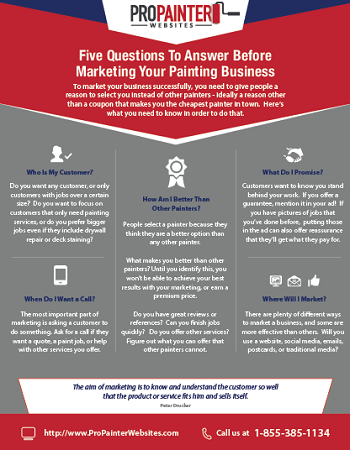Understand How Seasonal Problems Affect The Success Of Commercial External Paint And Discover The Ideal Durations To Ensure Resilient Outcomes For Your Project
Understand How Seasonal Problems Affect The Success Of Commercial External Paint And Discover The Ideal Durations To Ensure Resilient Outcomes For Your Project
Blog Article
Material Develop By-Fox Rosendal
When you're preparing a commercial outside painting task, seasonal variables can make or damage your outcomes. You'll wish to take into consideration how temperature level and moisture impact paint application and drying times. Picking the right period can ensure your paint adheres appropriately and lasts much longer. However which periods are genuinely the most effective for this kind of work? Allow's discover the key elements that can influence your task's success.
The Impact of Temperature on Paint Application
When you're intending an industrial exterior painting task, the temperature can considerably influence how well the paint adheres and dries.
Ideally, you wish to paint when temperatures vary in between 50 ° F and 85 ° F. If it's too chilly, the paint may not treat effectively, leading to issues like peeling or cracking.
On the flip side, if it's too hot, the paint can dry also promptly, protecting against correct attachment and causing an unequal coating.
You should also think about the time of day; early morning or late afternoon provides cooler temperature levels, which can be much more desirable.
Constantly inspect the supplier's recommendations for the specific paint you're utilizing, as they often provide guidance on the ideal temperature range for optimum outcomes.
Moisture and Its Result on Drying Times
Temperature level isn't the only ecological variable that affects your industrial exterior paint project; moisture plays a significant role also. High humidity levels can slow down drying out times substantially, influencing the general high quality of your paint task.
When the air is filled with moisture, the paint takes longer to cure, which can bring about issues like poor adhesion and a higher danger of mildew growth. If you're repainting on a specifically moist day, be planned for extended delay times in between layers.
It's critical to check regional weather and plan accordingly. Preferably, aim for humidity degrees in between 40% and 70% for ideal drying out.
Maintaining painting aluminum siding house consider mind guarantees your task stays on track and supplies a long-term surface.
Best Seasons for Commercial Exterior Paint Projects
What's the best season for your commercial outside paint tasks?
Spring and very early loss are commonly your best choices. During these seasons, temperatures are moderate, and moisture levels are usually lower, developing perfect problems for paint application and drying out.
Prevent summer's intense heat, which can create paint to completely dry too rapidly, causing bad adhesion and finish. Similarly, winter months's cold temperatures can impede correct drying and healing, running the risk of the long life of your paint task.
Go for days with temperatures between 50 ° F and 85 ° F for optimum results. Keep in mind to examine the regional weather report for rainfall, as damp problems can spoil your job.
Preparation around these aspects ensures your paint job runs smoothly and lasts much longer.
Conclusion
To conclude, preparing your commercial outside painting jobs around seasonal considerations can make a substantial difference in the result. By organizing Visit Homepage throughout the ideal temperature levels and moisture degrees, you'll make sure better adhesion and drying out times. Remember to keep an eye on neighborhood weather forecasts and choose the correct time of year-- spring and early autumn are your best choices. Taking these actions will help you accomplish a durable and specialist finish that lasts.
